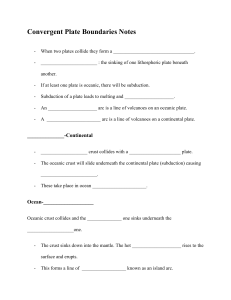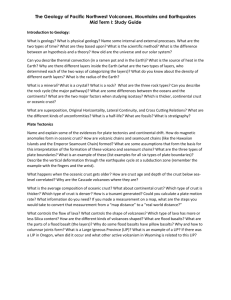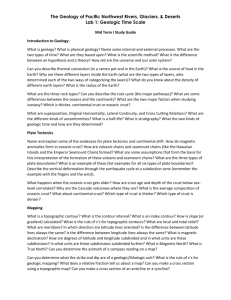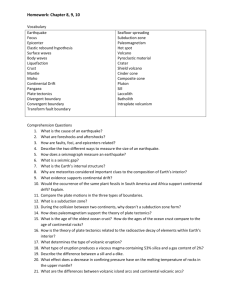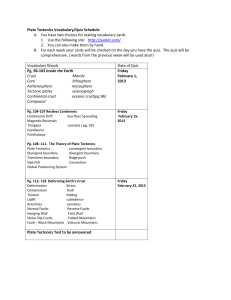GEO143_mid_term_I_st..
advertisement
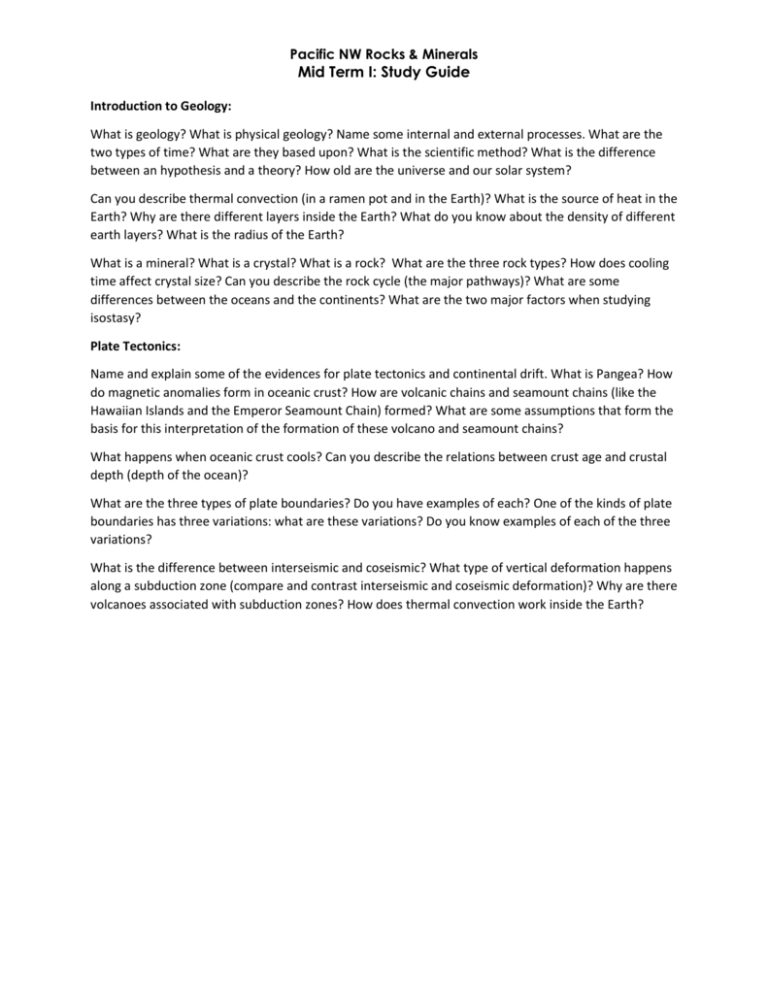
Pacific NW Rocks & Minerals Mid Term I: Study Guide Introduction to Geology: What is geology? What is physical geology? Name some internal and external processes. What are the two types of time? What are they based upon? What is the scientific method? What is the difference between an hypothesis and a theory? How old are the universe and our solar system? Can you describe thermal convection (in a ramen pot and in the Earth)? What is the source of heat in the Earth? Why are there different layers inside the Earth? What do you know about the density of different earth layers? What is the radius of the Earth? What is a mineral? What is a crystal? What is a rock? What are the three rock types? How does cooling time affect crystal size? Can you describe the rock cycle (the major pathways)? What are some differences between the oceans and the continents? What are the two major factors when studying isostasy? Plate Tectonics: Name and explain some of the evidences for plate tectonics and continental drift. What is Pangea? How do magnetic anomalies form in oceanic crust? How are volcanic chains and seamount chains (like the Hawaiian Islands and the Emperor Seamount Chain) formed? What are some assumptions that form the basis for this interpretation of the formation of these volcano and seamount chains? What happens when oceanic crust cools? Can you describe the relations between crust age and crustal depth (depth of the ocean)? What are the three types of plate boundaries? Do you have examples of each? One of the kinds of plate boundaries has three variations: what are these variations? Do you know examples of each of the three variations? What is the difference between interseismic and coseismic? What type of vertical deformation happens along a subduction zone (compare and contrast interseismic and coseismic deformation)? Why are there volcanoes associated with subduction zones? How does thermal convection work inside the Earth?
